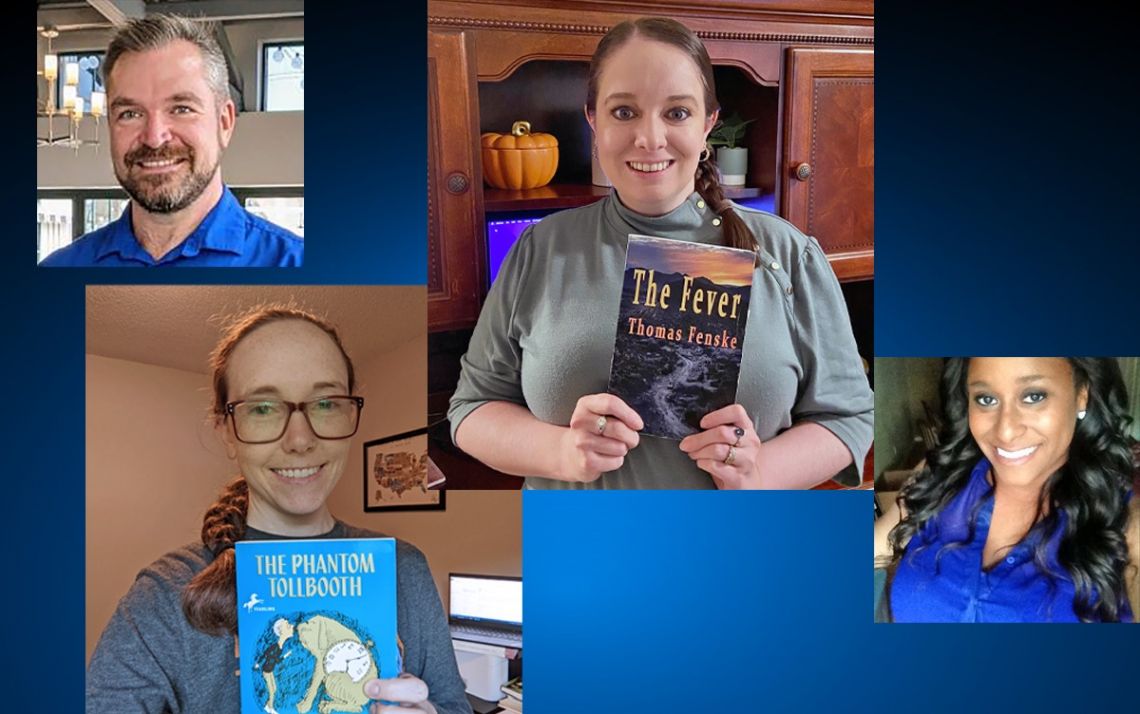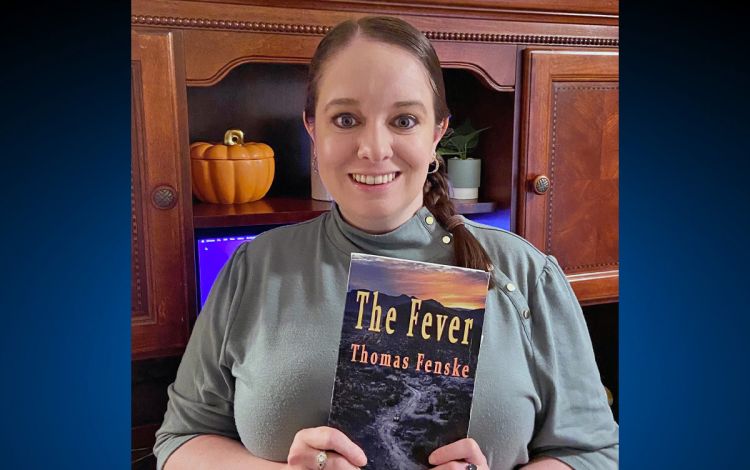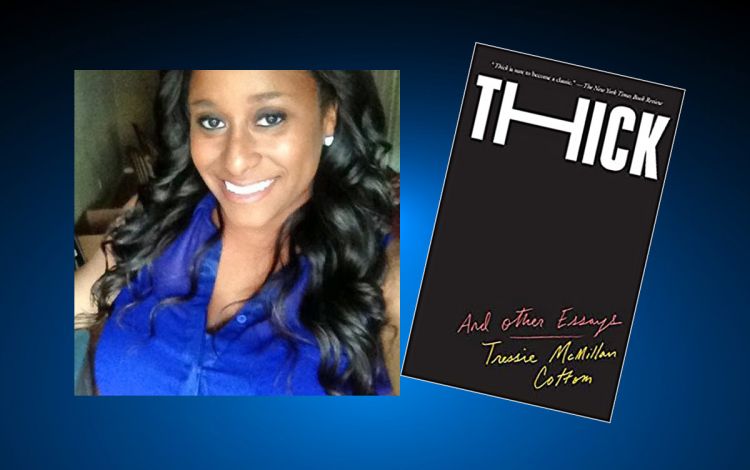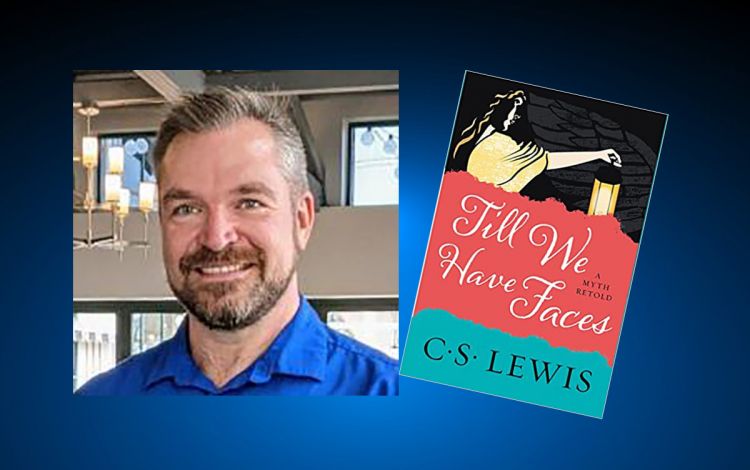Books of Lasting Influence
For National Book Month in October, Duke colleagues share titles that have left an impression on them

Over the summer, colleagues in the Duke Regional Hospital Ambulatory Care Unit put up a bulletin board to capture the books they were reading.
Each week, more titles appeared on the wall – books like “Where the Crawdads Sing,” “The Girl on the Train,” and “Apples Never Fall.” After a reader finished a book, they returned to the board and added star stickers corresponding to how much they liked a book.
“We plan on continuing to do this into the fall because we really enjoyed sharing our books and trying different reading materials,” said Leslie Keck, a registered nurse in the Duke Regional Hospital Ambulatory Care Unit.
On average, about 75 percent of Americans surveyed by the Pew Research Center earlier this year reported reading a book in any format in the past year. Americans, on average, read approximately 14 books in 2021.
Over the course of our lives, the books we read — for education, research, or pure entertainment— often leave a lasting impression on our work and lives. At Duke Libraries, faculty, staff and students can use their DukeCard to borrow materials. In addition, Duke Libraries runs a Low Maintenance Book Club, helping Duke community members connect over quick reads like short stories, graphic novels, short essays and poetry.
For National Book Month in October, we asked colleagues to share the books that have inspired them.
Audrey Fenske
“The Fever” by Thomas Fenske
Audrey Fenske, who works in marketing and communications for Alumni Engagement and Development, has the good fortune of knowing the author of one of her favorite books.
After retiring several years ago, her father, Thomas Fenske, a former staff member at the Duke University Press in the 1990s, completed a lifelong goal of writing a novel. The fictional book, which he named “The Fever,” recounts the story of Sam Milton and his quest to find treasure.
In reading her father’s bucket list project, Audrey remembers that it’s never too late to chase after goals and do what you love.
“His work as an author has really reminded me that it's never too late to successfully pursue a passion or a dream, and I try to keep that in mind with my own work,” she said. “It makes sense that this book is about a treasure hunt of sorts. A lot of us are on that constant pursual of success in life. My dad is proof that you can make it at any age.”
Nicole Mitchell
“Thick” by Tressie McMillan Cottom
In eight essays about beauty, media, money and more, University of North Carolina at Chapel Hill professor Tressie McMillan Cottom wrote in her 2019 book “Thick” about what it’s like to navigate society as a southern Black woman.
As a Black woman herself, Nicole Mitchell, a program coordinator for Housing and Residence Life in Student Affairs, felt a connection to the book. In the past several years, the Amazon best-seller became a favorite for Mitchell because it expertly combines humor, snark and wisdom when discussing race, politics, body image and other subjects that matter to her.
“Really great personal essays about navigating being a Black woman in today's society; dealing with social and political situations while still staying true to yourself,” Mitchell said. “I enjoy how she depicts modern day common situations in her essays and how they are written in a way that is smart and also funny.”
Justin M. Shorb
“Till We Have Faces” by C.S. Lewis
Over the years, Justin M. Shorb, a lecturer in the Department of Chemistry, has read and discussed “Till We Have Faces” by C.S. Lewis countless times with friends and colleagues. And each time he reads it, his takeaway becomes something different.
The novel, which Lewis, the author of the popular anthology “The Chronicles of Narnia,” regarded as his own best work, retells an ancient myth of Cupid and Psyche. The book gives the characters of the story depth and complexity that makes it a ripe subject for Shorb’s lifelong study of its intricacies.
“It’s the one book that I can share with friends and have book club after book club about and still be left thinking that the meaning is somehow beyond the reader as well as the author,” Shorb said. “And yet, the underlying message and story are profoundly impacting. As an academic, I appreciate that there appears to be no clear-cut way to dissect the book, the characters, nor the story. In that way, it’s the most life-like novel I have read. Sometimes life can be impacting and meaningful and still not understandable.”
Natalie Ziemba
“The Phantom Tollbooth” by Norton Juster
Since she first read “The Phantom Tollbooth” by Norton Juster in the fourth grade, Natalie Ziemba has loved it.
Over the years, she estimates she’s read the novel 20 times, most-recently picking up the comforting story early in the pandemic and flying through its approximate 150 pages in an afternoon.
The children’s fantasy novel follows a boy named Milo, on his quest for knowledge and excitement in the land of Expectations. As Milo navigates through adventure, Juster uses wordplay and humor that provided Ziemba another level of enjoyment as she got older and returned to a childhood favorite.
“I first read it in elementary school and loved how it explored so many different aspects of knowledge,” said Ziemba, an analyst programmer for Duke Clinical Research Institute. “As I’ve gotten older, I still find joy in the wordplay and metaphors, and spend more time reflecting on the diversity of perspectives this book offers for existing in the world. Such a classic!”
Stephanie Pearson

“The Source” by James Michner
At the recommendation of her mother, Stephanie Pearson read James Michener’s “The Source” as a teenager, and quickly felt inspired by the work.
The historical fiction novel uses archeological discoveries in the Holy Land to recreate life in an ancient city. The book then recounts the history of the Jewish people through the lens of predecessors of four modern people.
When Pearson read the book, it inspired in her a love for research, knowledge and reading books for fun. To this day, one of her favorite activities is sitting down to read and learn something new.
“My mother always told us,” said Pearson, a health unit coordinator in Surgical Oncology, “‘if you’re bored, read a book.’ Sage advice in my opinion!”
Do you have a book that has influenced your career or life? Comment on our Facebook post.
Send story ideas, shout-outs and photographs through our story idea form or write working@duke.edu.